9 Breeds of Dog With No Tail (2024)
How do you say hello? By shaking hands or waving. How do dogs say hello? By wagging their tails.
But what about dogs with no tails? One of the cutest things: watching a dog with no tail shake its butt.
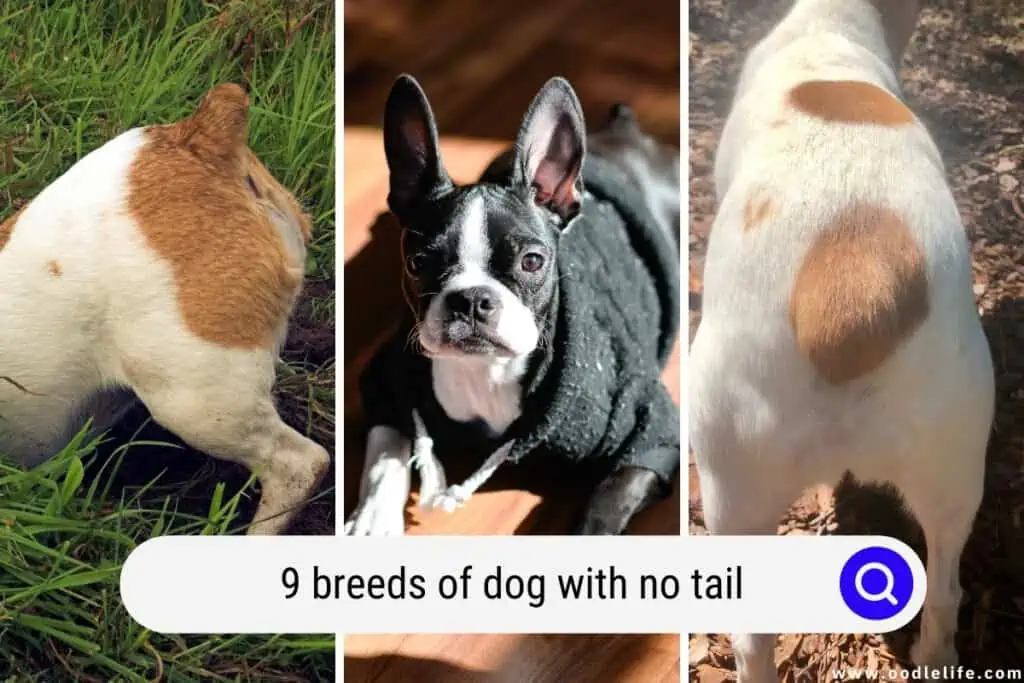
Dogs that are born without a tail are dogs with a genetic mutation that cause naturally bobbed tails. The length of the bobtail differs. Some dogs with the mutation will still have long tails; others will have no tails.
Tails that have been cut or docked after birth are classified differently.
Here are nine breeds of dogs that are born with no tail:
1. Australian Cattle Dog
One speckled dog with no tail goes by many names: Australian Cattle Dog, Queensland Heeler, Australian Heeler, Blue Heeler, Red Heeler, or Australian Stumpy Tail Cattle Dog. This sturdy, medium-sized dog was so named because it would nip at the heels of cattle they were herding.
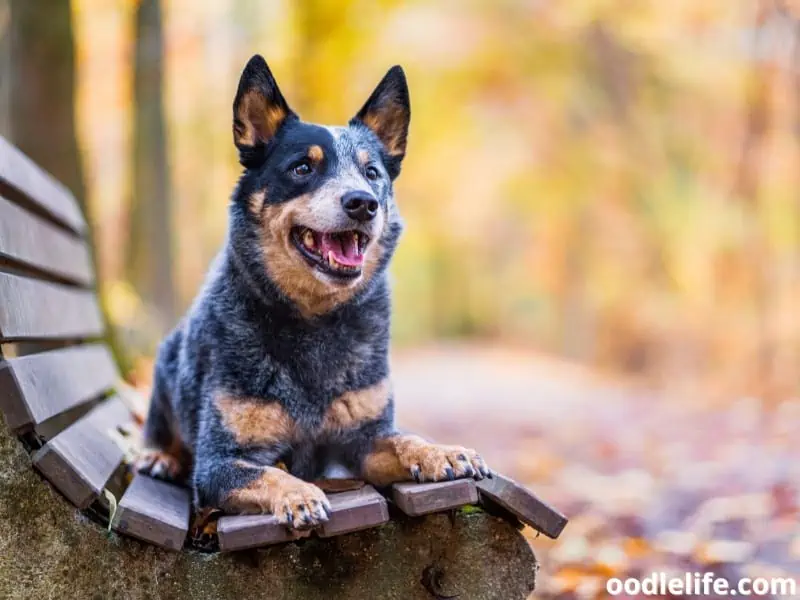
Australian Cattle Dogs are intelligent and active. They require daily activities such as hiking, training, agility, etc., to keep them busy and give them something to do. These no-tail dogs can be stubborn, but they enjoy challenges.
These dogs are affectionate and do well in families if trained well.
The care and upkeep for Australian Stumpy Tail Cattle Dogs are minimal. They need to be brushed weekly for coat upkeep and bathed when dirty. They usually are a healthy breed; however, vets will test for BAER because they can be genetically prone to deafness and eye diseases.
The average life span is 12 to 16 years, but the oldest recorded Australian Cattle Dog lived to be 29 years.
2. Boston Terrier
The Boston Terrier, or the American Gentleman because of its tuxedo jacket and dapper manners, is a small non-sporting dog with no tail. It doesn’t bark often and walks with a high gait. This compact dog is found in a variety of colors.
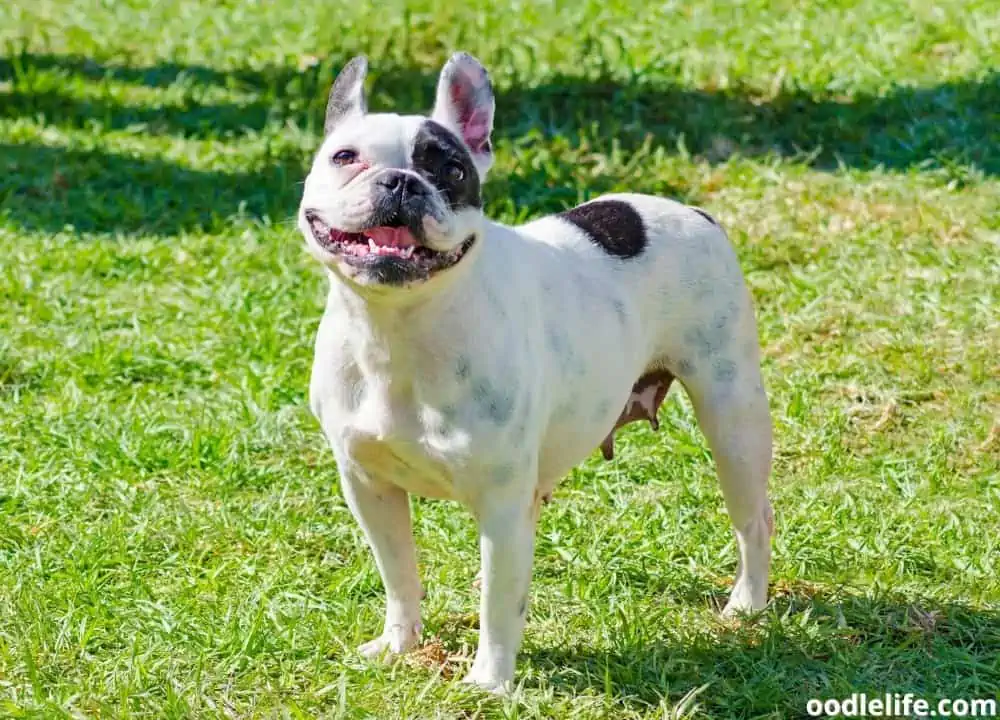
The tuxedo can be white and black, brindle, or dark brown.
Boston Terriers are intelligent and active; they are not content to sit around all day. They need daily exercise. Known to be a sensitive breed, they do best with gentle training.
Boston Terriers are affectionate and good with children and other dogs. These dogs with no tails are great family dogs.
The short coat on these dogs with no tail does shed, but only weekly brushing is needed for maintenance and baths when dirty. Their large eyes are prone to problems like cataracts, glaucoma, and ulcers. Boston Terriers have short noses (brachycephalic), which can cause breathing difficulties.
3. Braque du Bourbonnais
Braque du Bourbonnais or Bourbonnais Pointer originated from Bourbon in France. This dog with no tail is an unknown renowned hunter. It is a medium-sized working dog with no tail and is found in chestnut, white and fawn, or white and brown with spots.
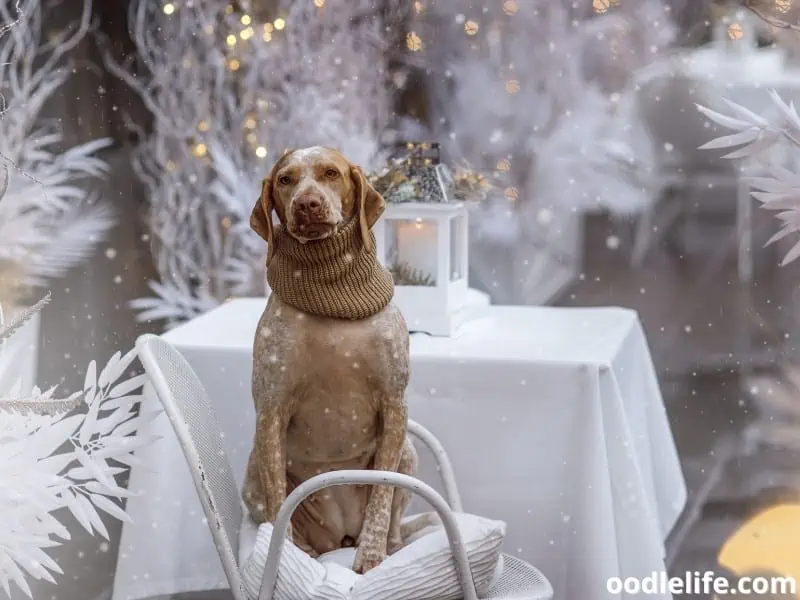
This breed has been endangered for years and is increasing in numbers.
These French pointers are family dogs and are used as emotional support since they can sense their owner’s mood. These dogs are affectionate and love being around people. They can be serious and adaptable but are known to have separation anxiety.
The Braque du Bourbonnais train quickly, and there are reports of them training themselves.
The Braque du Bourbonnais has a short coat that needs routine brushing. Check its floppy ears regularly for excessive wax and debris buildup to prevent ear infections. Typically, these dogs with no tails are healthy; however, it’s always good practice to be proactive and do genetic testing.
4. Brittany
The Brittany Spaniel, or the Brittany, is another French hunting dog with no tail. This prized, compact, medium-sized hunting dog is known for its stamina, agility, and versatility. They are smaller than Setters, bigger than Spaniels, and come in bold colors of white, orange, and reddish brown.
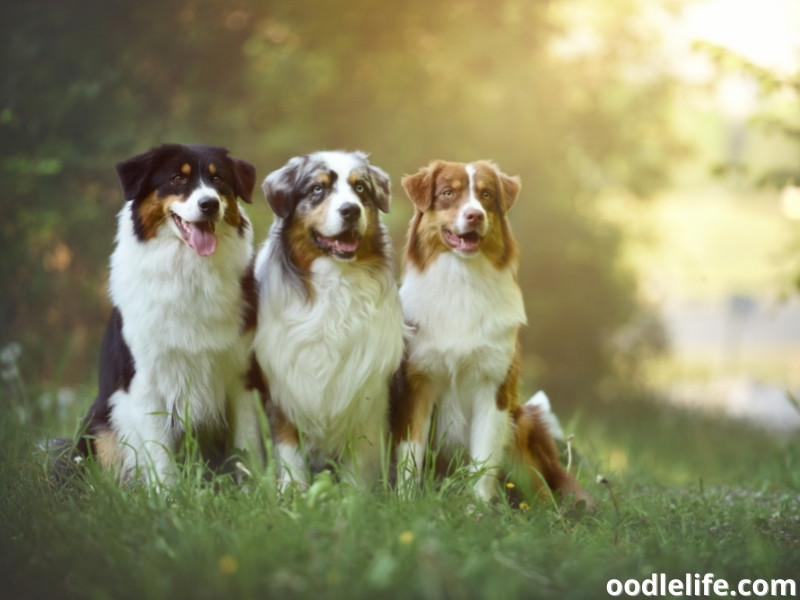
Brittanys are eager to learn and are a highly trainable breed. They are affectionate, playful, and good with children and other dogs. These dogs with no tails have been used as hunting dogs and in various dog sports like dock diving, field trials, flyball, obedience, etc.
They have a short and wavy or flat coat that needs minimal brushing. The breed is healthy with few genetic issues. Screen for eye disorders and hip dysplasia and check their ears routinely to prevent ear infections.
5. English Bulldog
The most owned dog breed, the English Bulldog or Bulldog, is courageous, docile, and stubborn. These muscular, medium-sized non-sporting dogs are loyal and easygoing companions. Found in a variety of patterns and colors, they have loose, rolling skin on their face, a short nose, small ears, and a hanging tongue, so keep a towel handy for drool.
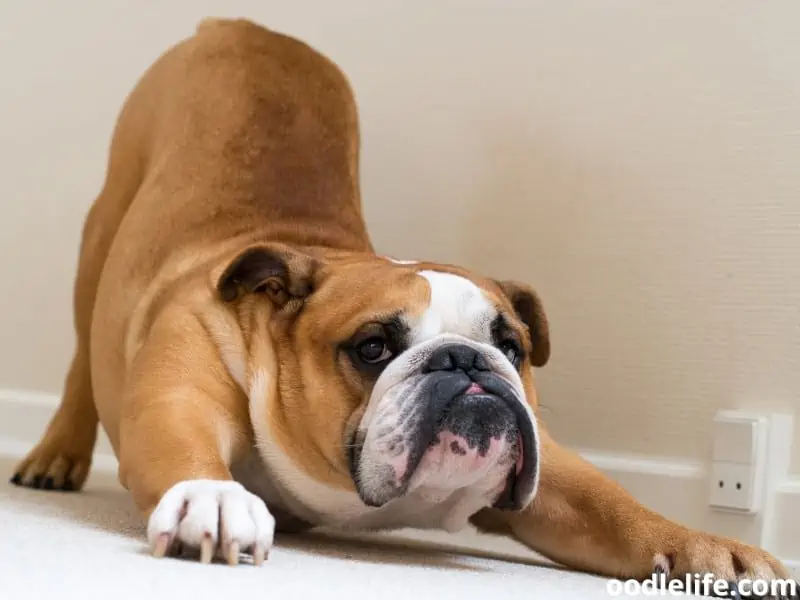
English Bulldogs are intelligent and quick learners when they want to be. However, they can be stubborn without early training and socialization. These dogs with no tail can become territorial and possessive over their people and belongings, so training is crucial.
The care and upkeep of English Bulldogs include brushing a few times weekly and routinely checking the loose folds on their face to prevent infections and irritation. Due to the short nose, English Bulldogs can have difficulty breathing. Screen routinely for cardiac health, hip dysplasia, skin infections, patella luxation, and tracheal hypoplasia.
6. French Bulldog
The most popular small dog breed, the French Bulldog, resembles a miniature Bulldog and is irresistible with its large bat ears and friendly disposition. Many French Bulldogs do not have tails!
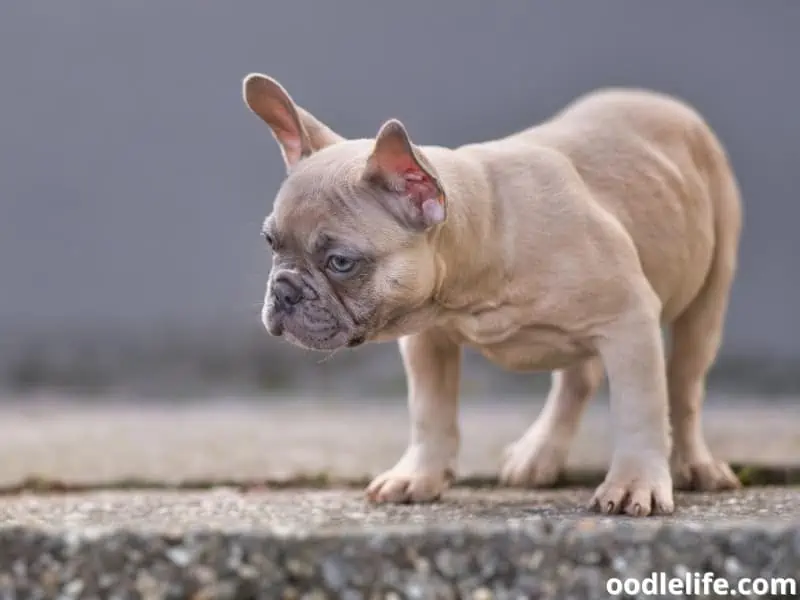
These dogs with no tails are affectionate, alert, and playful. French Bulldogs come in various colors: black, blue, brindle, chocolate, cream, fawn, white, and a mixture of these colors. However, not all colors are considered acceptable or breed standard.
French Bulldogs have prominent personalities and, like their larger cousin—the Bulldog—can be stubborn; therefore, early training and socialization are needed. However, they are easy to train and are easily motivated.
The French Bulldogs’ short coat only needs weekly brushing, and the loose folds on the face should be checked routinely.
Due to their short noses, French Bulldogs can have trouble breathing. They are also known to have eye disorders. Routinely monitor them for cataracts, cherry eye, and entropion and screen Frenchies for cardiac health, hip dysplasia, skin infections, and patella luxation.
7. Mudi
The AKC recently recognized the Mudi as a breed in 2022. This medium-sized herding dog from Hungary is courageous, loyal, and versatile. These dogs with no tail are seen in black, brown, gray, gray-brown, and yellow with merle markings.
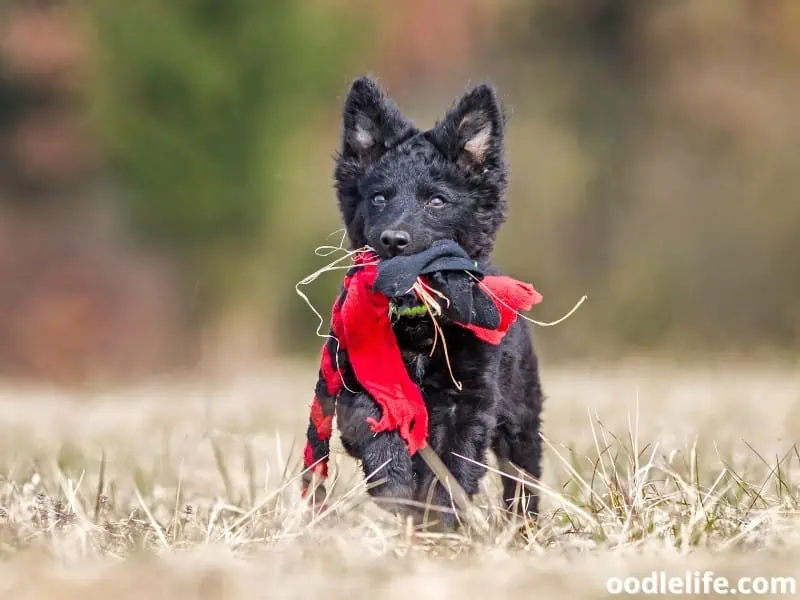
Mudi are energetic, enthusiastic, and eager to please. They are easily trainable and do well in dog sports such as agility, flyball, frisbee, and obedience, and they make excellent watchdogs.
Mudi are known in the US and Finland as search and rescue dogs. These dogs with no tail can be mischievous but tend to be calm and playful at home.
The care and upkeep of the Mudi breed is low maintenance, with only occasional brushing and baths when dirty. Overall, they are a healthy breed but should be screened for autoimmune thyroiditis, cardiac health, elbow dysplasia, eye disorders, hip dysplasia, and patellar luxation.
8. Pembroke Welsh Corgi
The Pembroke Welsh Corgi—not the look-alike Welsh Cardigan Corgi—is a herding dog with no tail. They are the smallest in the herding dog group and normally weigh under 30 pounds. They are short, muscular, and fearless.
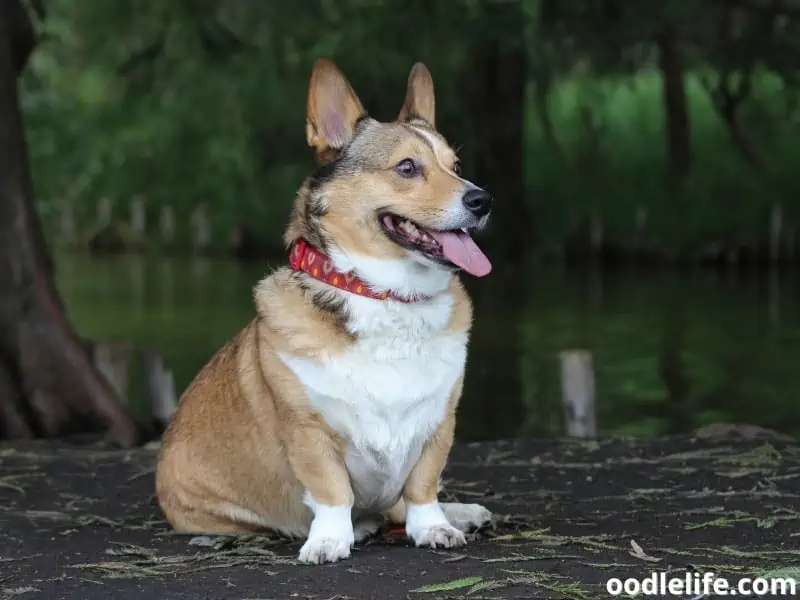
Their colors are fawn, red, sable, and black/tan with white markings.
Considered great family dogs and favored among British royalty, Pembroke Welsh Corgis are intelligent and companionable. Pembroke Welsh Corgis are eager to please and easy to train. They need daily exercise because they are high-energy and thrive with mental stimulation.
With a thick double coat, Pembroke Welsh Corgis shed a significant amount regularly. Daily combing and brushing with routine baths will help loosen the hair and remove it before it tumbleweeds through the house.
Normally, these dogs with no tail are healthy but should be checked for elbow dysplasia, cardiac issues, degenerative myelopathy, eye disorders, hip dysplasia, and von Willebrand’s disease.
9. Old English Sheepdog
The Old English Sheepdog is playfully called the Old English Bob-tailed Sheepdog and the Bob-tail. This shaggy herding dog with no tail has a thick, double coat and long bangs that cover its eyes. They usually are found in colors grey and white, while their eyes are either dark brown or blue.
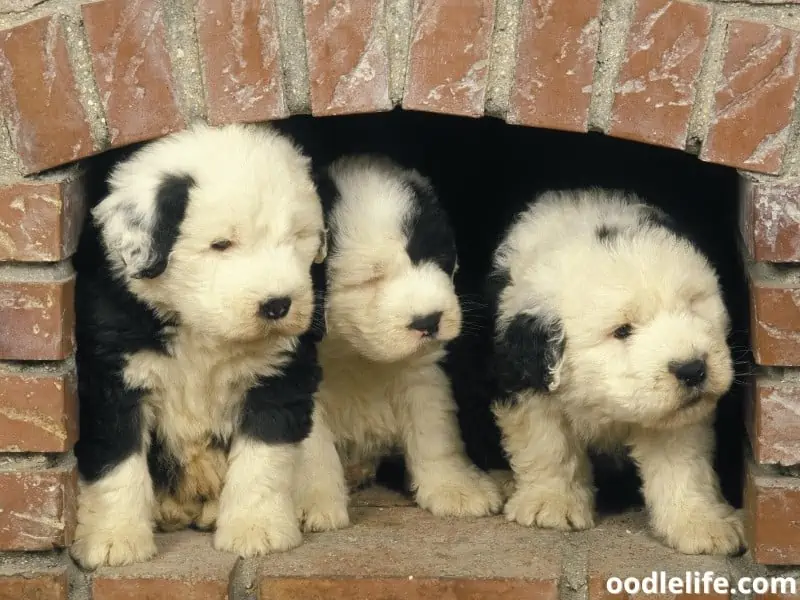
These large, strong, and agile dogs need regular exercise. Old English Sheepdogs are intelligent, kind, and protective. They are patient and great with children.
These dogs with no tail do need training and socialization. Once they learn something new, they never forget it. However, Old English Sheepdogs will get bored with repetitive training.
You will need to keep exercises fresh and fun to hold the attention of an Old English Sheepdog.
With thick and full coats, Old English Sheepdogs must be fully groomed weekly for maintenance. Screen Old English Sheepdogs for autoimmune thyroiditis, cardiac health, eye disorders, hereditary deafness, and hip dysplasia.
Conclusion
Dogs with no tails take just as much time and attention as dogs with tails. Whether you choose a dog based on its characteristics, temperament, maintenance, or a combination of traits, each has its own needs and requirements. Ultimately, choose the best dog for you based on temperament rather than appearance.